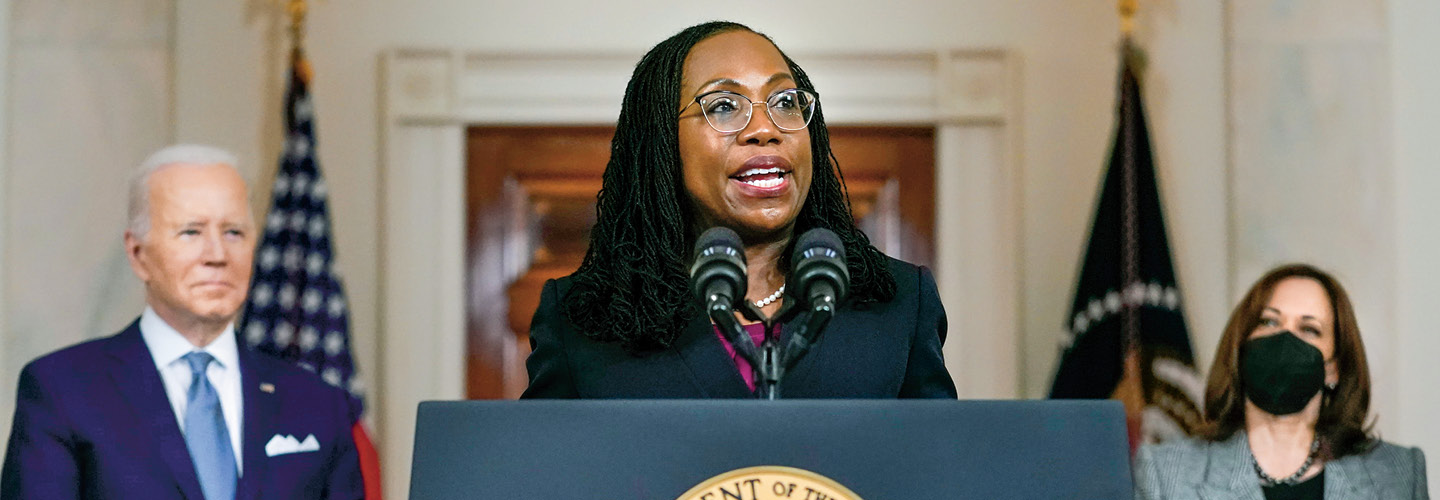Supreme Court confirmations are always contentious these days—after all, there’s a lot at stake when you’re appointing someone to a powerful lifetime position. And the one for Ketanji Brown Jackson, despite its historic nature, will likely be no different.
The nomination of Jackson, who if confirmed would be the first Black woman to serve as a justice, is President Biden’s first opportunity to shape the nation’s highest court.
Jackson, 51, a judge on the U.S. Court of Appeals for the District of Columbia circuit, would replace Justice Stephen G. Breyer, who in January announced his plan to retire when the current term ends in June. Jackson grew up in Miami and attended Harvard College and then Harvard Law School. She was a clerk for Justice Breyer. If confirmed, she would also be the first justice to have worked as a public defender—an attorney who represents criminal defendants who can’t afford to hire legal counsel.
Confirming a new Supreme Court justice is always a battle these days. After all, there’s a lot on the line when you’re appointing someone to a powerful lifetime position. The confirmation for Ketanji Brown Jackson is historic. Still, it will likely be no different.
The nomination of Jackson is President Biden’s first chance to shape the nation’s highest court. If confirmed, she would be the first Black woman to serve as a justice.
In January, Justice Stephen G. Breyer announced his plan to retire when the current term ends in June. Jackson, 51, would replace him. She currently serves as a judge on the U.S. Court of Appeals for the District of Columbia circuit. Jackson grew up in Miami. She attended Harvard College and then Harvard Law School. She was a clerk for Justice Breyer. Jackson also was a public defender. That’s an attorney who represents criminal defendants who can’t afford to hire legal counsel. If confirmed, she would be the first justice to have worked as a public defender.

